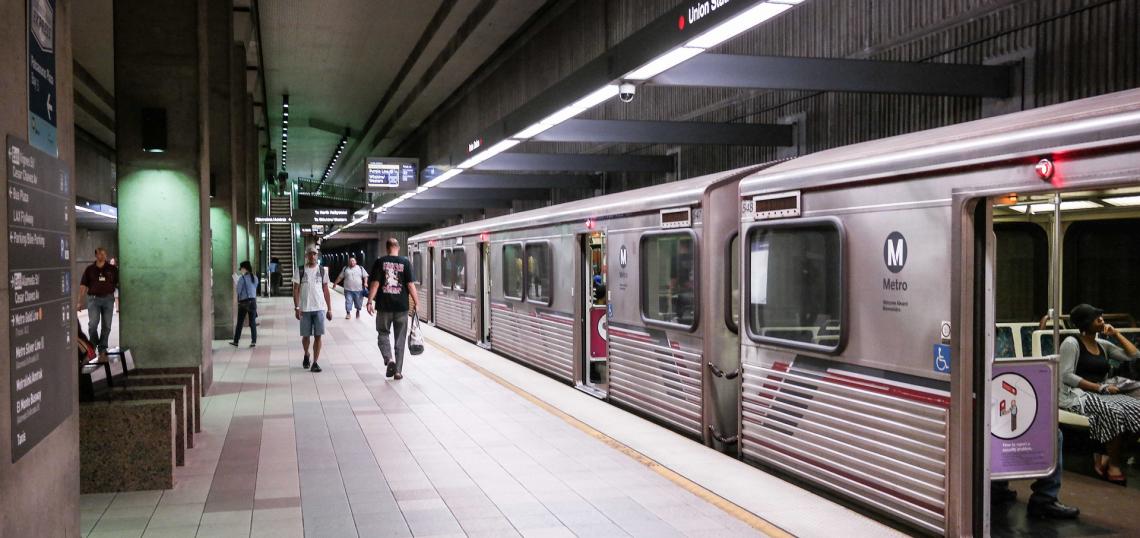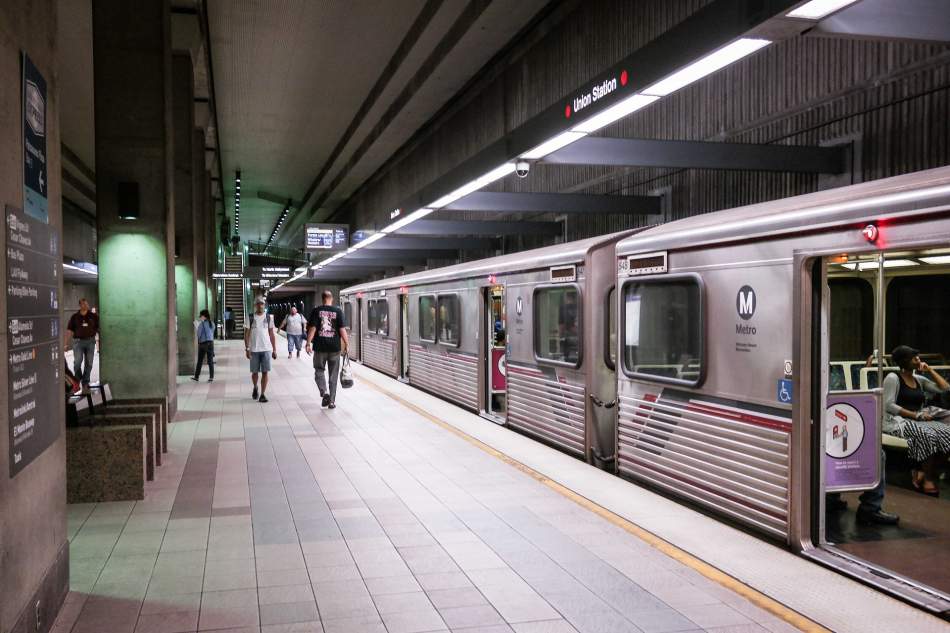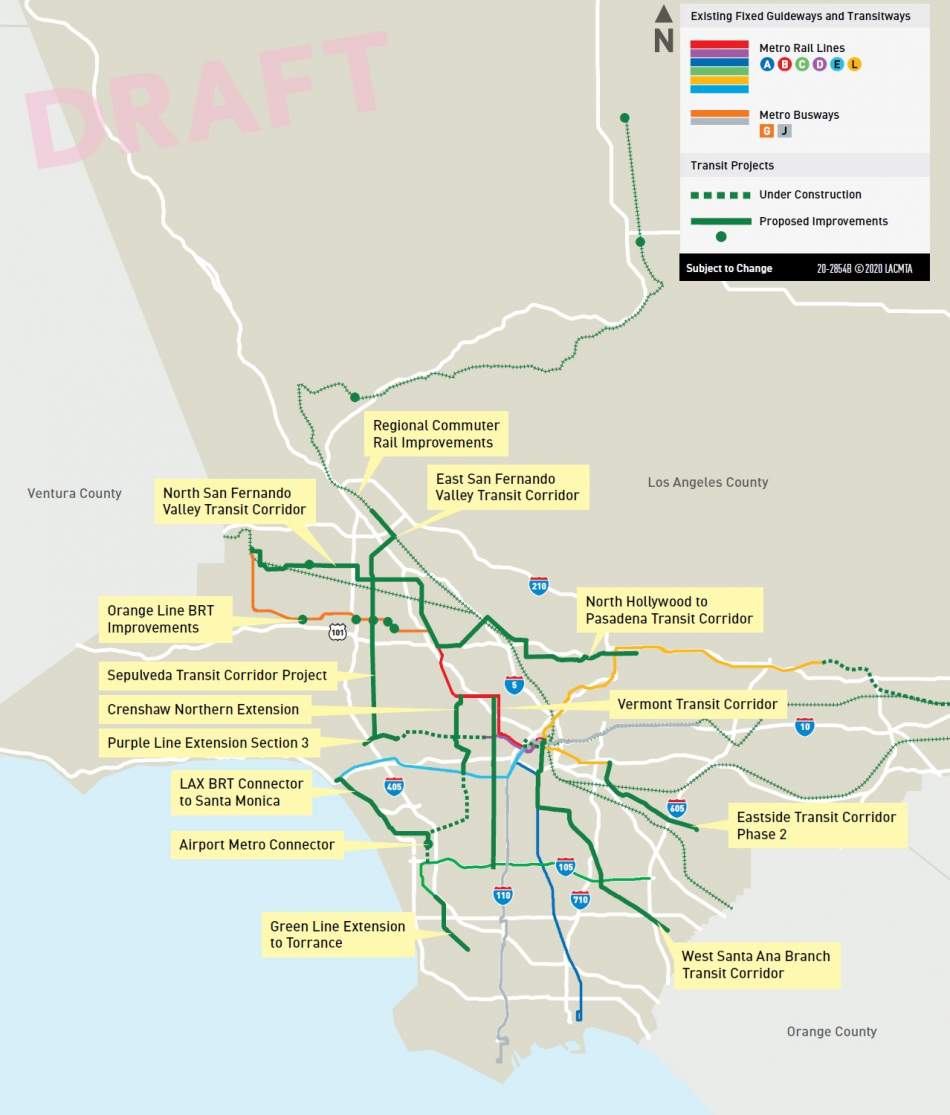In the months since COVID-19 hit, transit agencies have settled into a new normal: limited service, protective gear, disinfectant-sprayed buses, and free or reduced fares. But beyond day-to-day crisis management, transit is poised to play an essential role in economic recovery. Transit’s function – connecting people to jobs and services – and its well-documented and far-reaching economic impacts ensure that increased investments in transit service and infrastructure will be a necessary component of stimulus legislative packages and local economic development strategies going forward.
However, transit agencies are ill-equipped to capitalize on this need given the extraordinary repercussions the crisis is having on local transit funding, which is often restricted to local sales tax measures. Today, as ridership plummets and the broader economic fallout threatens retail sales, transit agencies are being forced to reevaluate ongoing expansion plans.
In Los Angeles, local authorities have promised to deliver transformational transit improvements ahead of the 2028 Olympic Games, but LA Metro’s ability to execute will be severely hampered given its reliance on sales taxes for 50% of its revenues. The agency must now scramble to find alternate sources of revenues or cut costs to meet its commitments to voters.
These momentous disruptions highlight the fragile and volatile nature of our transit agencies’ current funding sources. This is why we must rethink how transit agencies can increase their long-term revenues.
Increase the Share of Local Revenues from Real Estate and Value Capture
Real estate in growing metropolitan areas is more resilient to macroeconomic changes than volatile retail sales. Mechanisms that assign the value generated by transit to finance infrastructure projects are viable sources of revenue. Developing or leasing agency-owned land can enable local entities to better capture the value created by new connectivity and continue to support ridership.
LA Metro, the Santa Clara Valley Transportation Authority, and Bay Area Regional Transit all have joint development programs that can be used as a means of generating revenue through real estate – all while ensuring the production of much-needed affordable housing on agency-held land. At the state level, tax-increment financing (TIF) legislation should be reassessed to be more comprehensive and effective.
Agencies should conduct comprehensive reviews of their development portfolio to prioritize development opportunities with the greatest revenue potential, while establishing a roadmap for development and disposition that balances revenue generation with other policy objectives, such as affordable housing.
Deploy Congestion Pricing
As lockdown measures ease, it is unlikely that commuters will opt to take public transportation for some time. Congestion may become worse than in pre-COVID-19 times as private autos become the mode of choice, presenting an opportunity to revisit congestion pricing as a way to mitigate traffic and generate revenue for transit.
A March 2019 study conducted by the Southern California Council of Governments found that congestion pricing within a small part of West Los Angeles could bring in $69 million a year of discretionary revenues, even after accounting for the costs of tolling equipment and expanding transit service.
In collaboration with municipalities and Metropolitan Planning Organizations, transit agencies should carefully evaluate the viability of congestion pricing programs and even consider implementing pilot projects to measure effectiveness. Any congestion pricing scheme would need to ensure that low-income commuters are not disproportionately burdened by the proposal.
Double Down on Federal Involvement
The federal government’s recent appropriation of $25 billion for transit agency operations was historic, but this should be followed by sustained federal investment in capital development projects to stimulate the economy and support economic recovery. At a time when local and state governments are severely resource-constrained, it is even more critical to have a larger federal role in transit infrastructure delivery.
A priority must be to demonstrate the broad economic benefits of transit investment, including private investment and job creation, to attract federal funding for shovel ready projects. This step is particularly important given the administration’s preferences for public-private partnership projects.
Robust, safe, and frequent transit systems are essential components of urban vitality and environmental sustainability and will continue to be in the future. This crisis is exposing the fragility of our legacy transit systems and funding models, but it also provides us with an opportunity to emerge more resilient and secure moving forward.
Amitabh Barthakur, AICP is a partner at HR&A Advisors, where he brings 20 years of national and international experience along with a deep understanding of planning, policy and market issues pertaining to California and the Southwestern United States.









